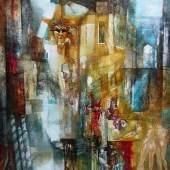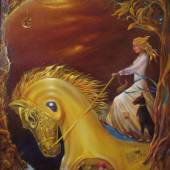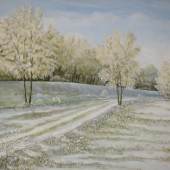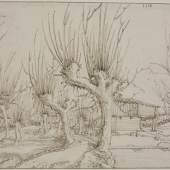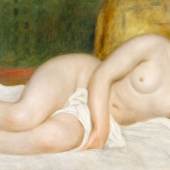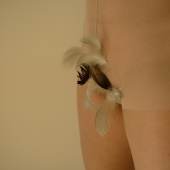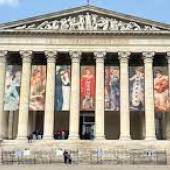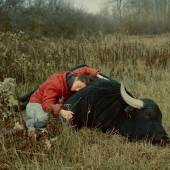An Eastern European perspective - interview with TOBE's Tomas Opitz
-
Presse01.08.2024
“The echoes of communism still resonate in the work of young Hungarian photographers,” says Tomas Opitz, owner and co-founder of TOBE Gallery in Budapest. Although none of them has physically experienced communism or its fall, the changes brought about by the implosion were so fundamental that they have translated into a different perspective on life over the past 35 years. At Unseen, TOBE is showcasing the work of Anna Fabricius, Anna Gajewszky and Gergely Kováts, all three recent graduates of the Moholy-Nagy University of Art and Design Budapest MOME and all three who tell stories that are vulnerable and highly personal, yet recognisable and universal. "They provide us with a sincere exploration of self-evaluation and a yearning for life in which the often-present dystopian veil of our daily existence seems to dissipate." Thanks to this combination, there is increasing interest in the work of Eastern European photographers. We spoke with Tomas Opitz about Unseen, their gallery programme and the Eastern European context.
TOBE is a contemporary photography gallery in Budapest, the capital of Hungary, that you established 11 years ago. Tell us a bit about yourself. What made you decide to start a gallery?
It was a joint decision together with my wife Bea Puskás. After traveling together to several major cities and seeing that galleries dedicated to contemporary photography also held a respectable position in the artistic and cultural offerings of these cities, we felt that this was our path to take. After several years in the environmental conservation sector, Bea later specialised in cultural management at MOME University and my background in architecture and photography, which I studied in Caracas, Venezuela, led us to venture into the world of galleries.
Why Budapest?
Budapest is our home and we felt there was a gap in the gallery offerings dedicated to contemporary photography. Some galleries had closed after 2010 and in others, the percentage of artists dedicated to photography was much smaller compared to other artistic specialties.
What is the focus of your programme?
From the very start, our goal was to introduce a new concept to the city. We wanted to bring a fresh perspective to Budapest, which is why we included Latin American artists in our portfolio from day one. Initially, we showcased works related to landscapes and their personal interpretations, as well as pieces with a strong focus on abstraction. We gradually expanded our portfolio to include figurative work. We were also interested in combining the work of young and unknown talents with that of more established artists.
Why did you decide to participate in Unseen?
In 2018, we visited Unseen for the first time. Although we had already heard a lot of good things about the fair, we were very impressed by the galleries' offerings and the youthful atmosphere. For this reason, we decided to apply in 2019 and were selected. It was a very positive and rewarding experience. Despite the difficulties of the post-COVID era, we feel there is still great potential in this fair. The visiting public is very open to new things and we also feel challenged every time we apply. We want to continue to attend and for the public to keep discovering and being engaged with our programme and artistic offerings.
Hungary has produced many prolific photographers in the past, such as Brassaï, Capa, Kertész and Moholy-Nagy. What is happening these days? Is Hungary still a fertile ground for photographers?
There is no shortage of talent; the ground remains very fertile. In fact, there are many young talents and mid-career artists who are making a name for themselves. Our job is to promote those living in Hungary to the outside world, unlike in the past when most Hungarian photographers became famous only after emigrating.
For the presentation at Unseen, you will be the curator of a booth showcasing the work of recent graduates of the MOME Art and Design University in Budapest. In the Netherlands, most art academies have a particular field in which they excel. Is this also true in Hungary and where does MOME fit in?
The Moholy-Nagy University of Art and Design in Budapest offers the most stable and comprehensive photography programme, supported by a team of teachers and professors with extensive experience in the field. The Bachelor's programme provides a solid foundation, which can be followed by a Master's programme, which has been available in English since 2022. Those who want to further their studies can continue with the DLA programme. All of this takes place on a magnificently renovated campus that encourages free interaction with other departments. Most of the Hungarian artists in our portfolio are MOME graduates, some of whom remain connected to the university as professors or workshop instructors.
Is there a visible common thread in the work you will show at Unseen? If so, is it related to the MOME programme?
The work of MOME thesis students is particularly intriguing. They explore deeply personal themes within a context that may be unfamiliar—the local Eastern European context—yet their execution and presentation consistently offer a universal and contemporary perspective. These pieces delve into themes of introspection, analysis, understanding and the artists' personal realities and traumas in relation with the social expectations. They provide us with a sincere exploration of self-evaluation and a yearning for life in which the often-present dystopian veil of our daily existence seems to dissipate.
You mentioned the Eastern European context. How would you describe that context?
-
09.11.2023 - 17.03.2024Gateways in Existence presents works by contemporary artist Alexandre Hollan, born in Hungary (...
-
22.09.2023 - 07.01.2024The Museum of Fine Arts, Budapest in conjunction with the Musée d’Orsay, Paris and Musée de...
-
08.09.2022 - 01.10.2022The idea of presenting the artists Anita Frech and Miša Marek in this exhibition is based on a...
-
The Museum of Fine Arts Budapest, which houses one of the most important collections of European...
-
01.08.2024Presse »
.



